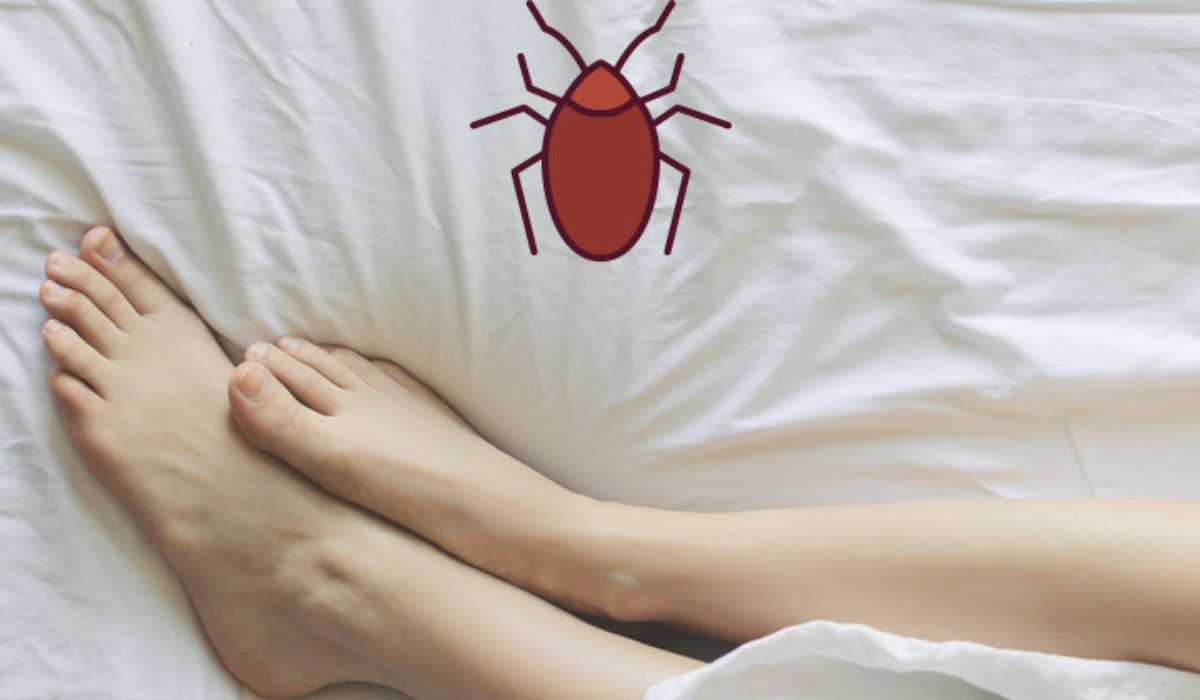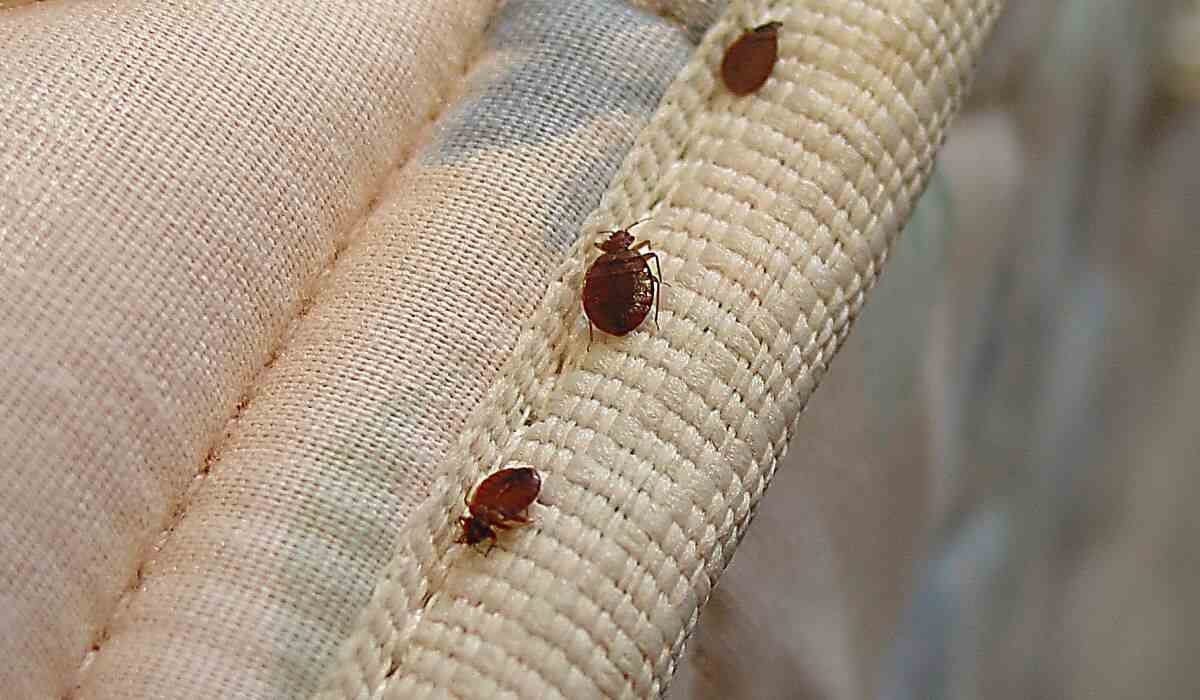Bed bugs travel by hitching rides on people’s belongings. They’re expert stowaways, sneaking into luggage, clothes, and furniture. These tiny pests can’t fly or jump, but they’re great at crawling and hiding.
Ever wondered how those pesky bed bugs seem to pop up in every room of your house? It’s like they’ve got a secret roadmap! These tiny terrors are master travellers, using sneaky tactics to spread their reign of itchy terror. Let’s uncover the mysterious ways bed bugs move from room to room – you’ll be scratching your head (and maybe everywhere else) at their ingenious methods!
Bed bugs are sneaky hitchhikers, using our daily habits to spread throughout our homes. They can’t fly or jump, but they’re expert crawlers. These tiny pests squeeze through the smallest cracks in walls, travel along pipes and wires, and hitch rides on our clothes and furniture. They’re drawn to warmth and carbon dioxide, which is why they often start in bedrooms and then explore new areas in search of food. Understanding their travel methods is key to stopping these unwanted house guests in their tracks.
Unraveling Their Sneaky Journey
In recent years, the United States has witnessed a startling resurgence of a tiny, persistent pest that sends shivers down the spines of homeowners and hoteliers alike: bed bugs. These nocturnal nuisances have become more than just a bedtime story boogey man; they’re a real and growing problem across the country. But how exactly do these miniature menaces manage to spread their reign of terror from one room to another? Let’s dive into the fascinating (and slightly creepy) world of bed bug travel.
Bed Bug Basics: Know Your Enemy
Before we embark on our journey to understand how bed bugs move, let’s get acquainted with these unwelcome houseguests. Bed bugs are small, oval-shaped insects about the size of an apple seed. They’re reddish-brown, and they have a knack for hiding in the tiniest of cracks and crevices.
Their life cycle is relatively simple:
- Eggs
- Nymphs (5 stages)
- Adults
Each stage requires a blood meal to progress to the next, which is why they’re so fond of hanging around where humans sleep. These crafty critters can live for several months without a meal, making them particularly resilient pests.
The Hitchhiker’s Guide to Bed Bug Travel
Bed bugs are the ultimate opportunists when it comes to travel. They’ve perfected two main methods of getting around:
Passive Transport: Hitching a Ride
This is the bed bug’s preferred mode of long-distance travel. They’re expert hitchhikers, latching onto luggage, clothing, furniture, and even books. Here’s how they do it:
- Luggage: They crawl into the seams and pockets of suitcases.
- Clothing: They hide in the folds of clothes, especially those left on the floor.
- Furniture: Used furniture can be a bed bug express train to a new home.
- Books and electronics: Yes, even your Kindle isn’t safe from these bookworms!
Active Movement: When Bed Bugs Decide to Explore
While bed bugs aren’t known for their athleticism, they can and do move on their own when necessary. They typically travel about 3-4 feet per minute on most surfaces. That might not sound fast, but it’s enough to get them from room to room when they’re on a mission.
Room-to-Room Travel Methods
Now, let’s get to the heart of the matter: how do bed bugs travel from room to room within a home or building?
Through Walls and Floors
Bed bugs are flat, which allows them to squeeze through tiny cracks and crevices. They can navigate through:
- Small openings around baseboards
- Spaces in wooden floorboards
- Openings where pipes and electrical lines enter a room
Along Pipes and Electrical Lines
Once inside walls, bed bugs can use pipes and wires as highways to other rooms. They’re particularly fond of the warmth that some of these structures provide.
Riding on Furniture and Belongings
This is where their passive transport skills shine. As items are moved from room to room, bed bugs hitch a ride. Common culprits include:
- Bedding and linens
- Clothing (especially if stored under the bed)
- Stuffed animals
- Picture frames
Factors That Influence Bed Bug Movement
Bed bugs don’t just move for the fun of it. Several factors can trigger their wanderlust:
- Food availability: If their current location is no longer providing regular meals (i.e., you), they’ll go searching for new food sources.
- Temperature and humidity: Extreme conditions can drive bed bugs to seek more comfortable environments.
- Population density: Overcrowding in their current spot can push bed bugs to explore new territories.
Signs That Bed Bugs Are on the Move
Knowing the signs of bed bug activity can help you catch an infestation before it spreads. Keep an eye out for:
- Live bugs: Obviously, seeing actual bed bugs is a clear sign.
- Tell-tale stains: Rusty or reddish stains on bed sheets or mattresses.
- Shed skins: As bed bugs grow, they leave behind light brown exoskeletons.
- Unexplained bites: If you’re waking up with itchy bites in new areas, it could indicate bed bugs have moved.
Prevention: Stopping the Bed Bug Express
An ounce of prevention is worth a pound of cure, especially when it comes to bed bugs. Here are some strategies to keep these pests from spreading:
- Regular inspections: Check your bedding, furniture, and baseboards regularly.
- Protective measures: Use bed bug-proof mattresses and pillow covers.
- Be cautious with second hand items: Thoroughly inspect any used furniture before bringing it into your home.
- When traveling: Keep luggage off the floor and bed, and inspect your items before bringing them back into your home.
When Bed Bugs Strike: Containment Strategies
If you do find bed bugs, quick action is crucial to prevent their spread. Here’s what to do:
- Isolate-infested items: Seal affected clothing or bedding in plastic bags.
- Clean thoroughly: Vacuum the area and dispose of the bag immediately.
- Consider professional help: Bed bugs are notoriously difficult to eliminate without professional assistance.
Remember, a whole-home approach is necessary. Treating just one room often leads to the bugs simply relocating to another area.
Myth busting: Common Misconceptions About Bed Bug Travel
Let’s clear up some common myths about how bed bugs get around:
| Myth | Reality |
| Bed bugs can fly or jump | False. They can only crawl. |
| They’re only active at night | While primarily nocturnal, they will feed during the day if hungry. |
| They prefer dirty environments | Cleanliness doesn’t deter them; they’re attracted to warmth and CO2. |
The Future of Bed Bug Control
As bed bugs continue to be a problem, researchers are working on new ways to detect and prevent their spread. Some exciting developments include:
- Pheromone traps: These could lure bed bugs out of hiding.
- Early detection devices: New technologies may be able to detect bed bugs before an infestation takes hold.
- Improved understanding of bed bug behaviour: This could lead to more effective prevention strategies.
Conclusion
Bed bugs are master travellers, using both passive and active methods to move from room to room. They exploit our habits and belongings to hitch rides to new locations, and their ability to squeeze through tiny spaces allows them to navigate within our homes undetected.
By understanding how bed bugs travel, we can better protect ourselves from these persistent pests. Regular inspections, careful handling of second hand items, and quick action at the first sign of bed bugs are our best defenses. Stay vigilant, and don’t let the bed bugs bite.













